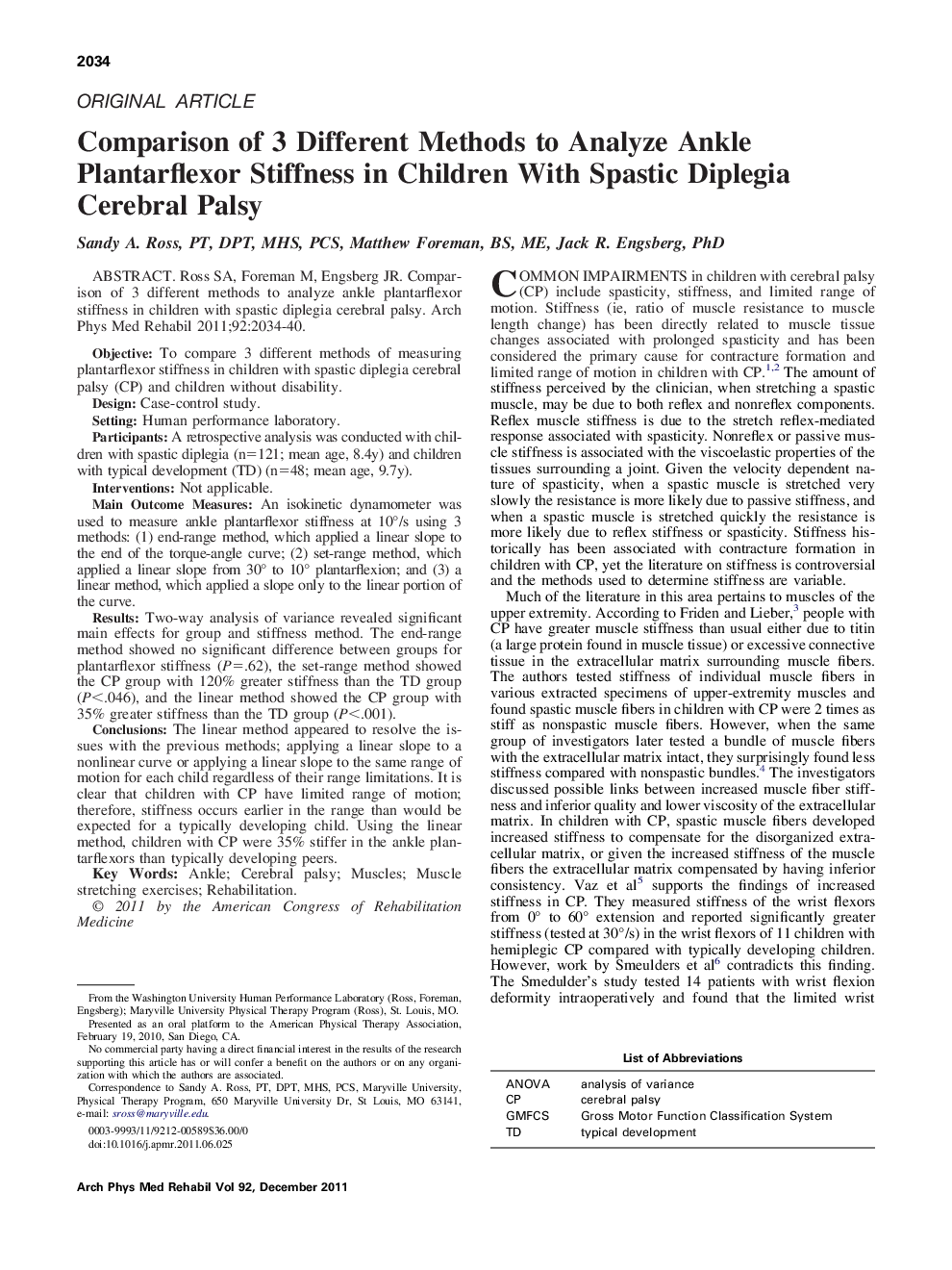| کد مقاله | کد نشریه | سال انتشار | مقاله انگلیسی | نسخه تمام متن |
|---|---|---|---|---|
| 3450357 | 1595732 | 2011 | 7 صفحه PDF | دانلود رایگان |

Ross SA, Foreman M, Engsberg JR. Comparison of 3 different methods to analyze ankle plantarflexor stiffness in children with spastic diplegia cerebral palsy.ObjectiveTo compare 3 different methods of measuring plantarflexor stiffness in children with spastic diplegia cerebral palsy (CP) and children without disability.DesignCase-control study.SettingHuman performance laboratory.ParticipantsA retrospective analysis was conducted with children with spastic diplegia (n=121; mean age, 8.4y) and children with typical development (TD) (n=48; mean age, 9.7y).InterventionsNot applicable.Main Outcome MeasuresAn isokinetic dynamometer was used to measure ankle plantarflexor stiffness at 10°/s using 3 methods: (1) end-range method, which applied a linear slope to the end of the torque-angle curve; (2) set-range method, which applied a linear slope from 30° to 10° plantarflexion; and (3) a linear method, which applied a slope only to the linear portion of the curve.ResultsTwo-way analysis of variance revealed significant main effects for group and stiffness method. The end-range method showed no significant difference between groups for plantarflexor stiffness (P=.62), the set-range method showed the CP group with 120% greater stiffness than the TD group (P<.046), and the linear method showed the CP group with 35% greater stiffness than the TD group (P<.001).ConclusionsThe linear method appeared to resolve the issues with the previous methods; applying a linear slope to a nonlinear curve or applying a linear slope to the same range of motion for each child regardless of their range limitations. It is clear that children with CP have limited range of motion; therefore, stiffness occurs earlier in the range than would be expected for a typically developing child. Using the linear method, children with CP were 35% stiffer in the ankle plantarflexors than typically developing peers.
Journal: Archives of Physical Medicine and Rehabilitation - Volume 92, Issue 12, December 2011, Pages 2034–2040